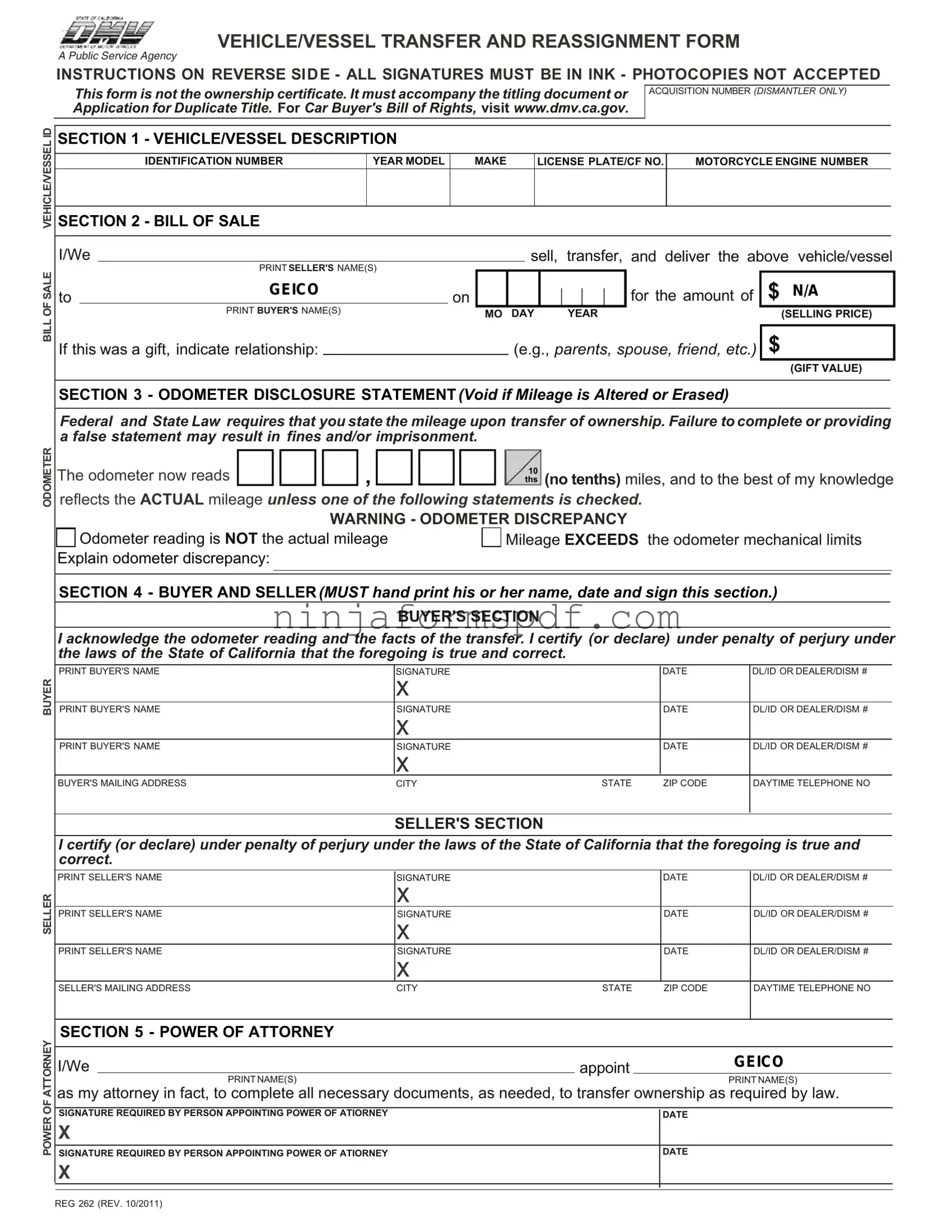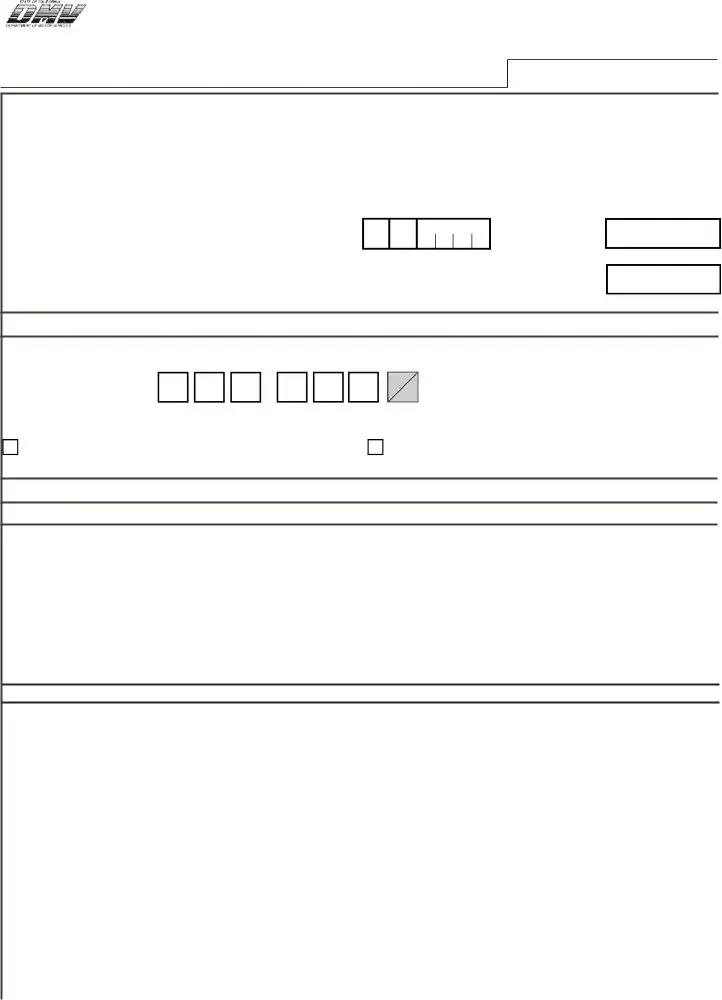What is the purpose of the California Form REG 262?
The California Form REG 262, also known as the Vehicle/Vessel Transfer and Reassignment Form, serves multiple purposes in the vehicle transaction process. This form is utilized to document the sale or transfer of a vehicle or vessel between parties. It contains sections for a bill of sale, odometer disclosure, and power of attorney, making it a comprehensive document that details the transaction specifics, including the vehicle’s description, the identities of the buyer and seller, and the sale price or gift value. Furthermore, it facilitates compliance with legal requirements, such as providing a proper odometer disclosure statement as mandated by federal and state law.
Who needs to fill out Form REG 262?
Both the seller and buyer (or donor and recipient in the case of a gift) of a vehicle or vessel in California must complete Form REG 262. Specific sections of the form require input from either the seller or the buyer. For instance, the seller is responsible for providing the vehicle/vessel description and odometer reading, while the buyer must acknowledge the odometer disclosure and provide their personal information. If power of attorney is being used to complete any part of the transaction, the person granting this authority must also provide their information and signature on the form.
Can Form REG 262 be filled out online?
Form REG 262 is a controlled document that contains unique features, such as security watermarks, which means it cannot be downloaded or correctly filled out online. The California Department of Motor Vehicles (DMV) requires that this form be completed in ink and does not accept photocopies. Therefore, individuals looking to obtain this form must request it directly from the DMV, either in person at a local DMV office or through other means as provided by the DMV.
Is Form REG 262 required for all vehicle transactions in California?
While Form REG 262 is crucial for many vehicle transactions in California, there are specific instances where its use may not be required. This determination largely depends on the nature of the transaction and the types of vehicles involved. However, for most private sales, gifts, and certain commercial transactions involving the transfer of ownership of a vehicle or vessel, Form REG 262 is necessary to ensure the accurate recording of the transaction’s details and compliance with legal requirements.
What happens if I make a mistake on Form REG 262?
If a mistake is made while filling out Form REG 262, it is important not to alter or attempt to correct the error in a way that could cause confusion or invalidate the document, such as erasures or write-overs. Instead, the best course of action is to obtain a new form and complete it accurately. This approach ensures the integrity of the transaction's documentation and prevents potential legal complications related to odometer fraud or misinformation.
How long should I keep a copy of Form REG 262?
After completing Form REG 262, it's advisable for both the seller and the buyer to retain copies of the document for their records. While the California DMV does not specify a mandatory period for retaining these records, keeping them for at least five years is a good rule of thumb. This timeframe aligns with federal requirements for odometer disclosure record retention. Holding onto the form serves as proof of the transaction's details and can be valuable in the event of future disputes or inquiries.

